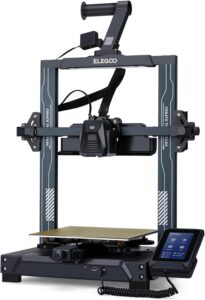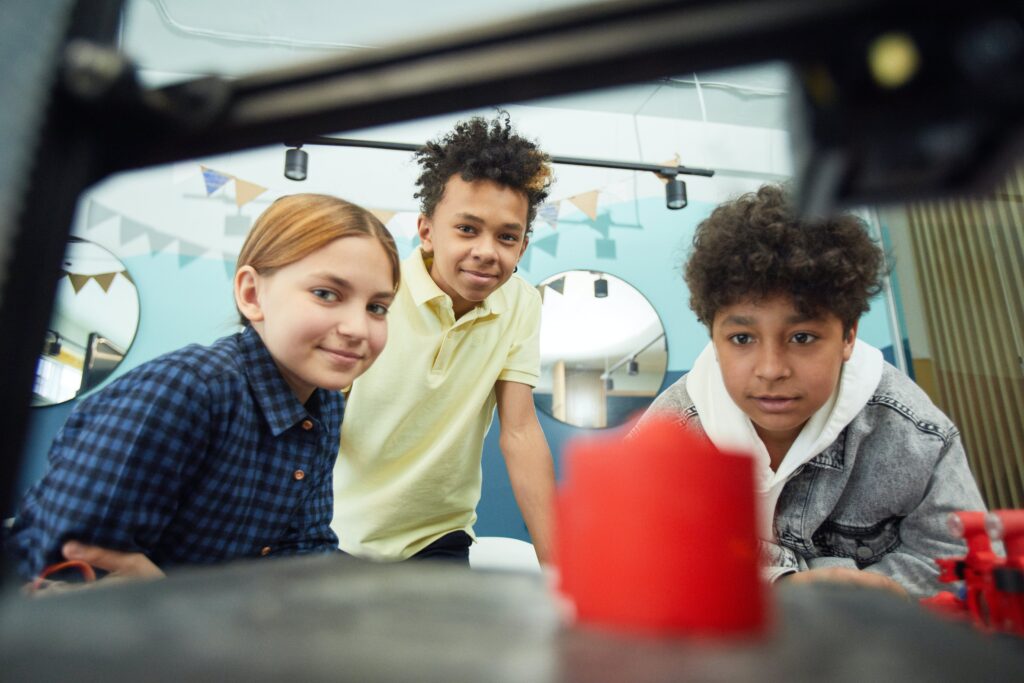Disclosure: This article contains affiliate links, which means that if you click on one of the product links and make a purchase, we may receive a small commission.
My First Contact
When I first heard about 3D printers, I thought they belonged in the realm of Star Trek – futuristic gadgets creating objects out of thin air. But as I delved deeper, my perception shifted from sci-fi fantasy to a practical, almost indispensable tool in today’s world. The evolution of my understanding of 3D printers has been nothing short of a journey from disbelief to awe.
The first time I encountered a 3D printer, it felt like stepping into a new world. The hum of the machine, meticulously crafting layer upon layer, was mesmerizing. Each print felt like a small miracle – a digital concept transformed into a tangible reality. There were hiccups, of course. The learning curve was steep, and my first few attempts were more abstract art than engineering feats. But the process, with all its trials and errors, was unexpectedly humorous and profoundly educational.
How can 3d Printers Impact the Classroom?
This hands-on experience with 3D printing ignited my imagination about its vast potential in educational settings, especially in classrooms and counseling environments. The possibilities seem almost endless. Picture a geography class transformed by 3D-printed models, where students can actually touch and feel the contours of mountain ranges and valleys, making learning about Earth’s geography a tangible experience. Envision a history class where replicas of ancient artifacts, once only seen in textbooks or museums, are brought to life right in the classroom. This could bridge the gap between past and present, making history a more engaging and immersive subject.
In a counseling setting, the impact of 3D printing could be profound. For instance, during career guidance sessions, students could use 3D printing to create models symbolizing different professions – a miniature stethoscope for medicine, a gavel for law, or a microchip for technology. This hands-on approach could help students in visualizing and solidifying their future aspirations. It could also be a tool for self-expression, allowing students to materialize their thoughts and emotions, providing counselors with a deeper insight into their perspectives and inclinations.
Moreover, in science classes, imagine the excitement of students printing out molecular or anatomical models, helping them understand complex structures in a more concrete way. Art classes could reach new heights of creativity, with students designing and bringing to life their unique artistic visions. Even in mathematics, geometric concepts and shapes could be printed, providing students with physical models to better grasp abstract concepts.
The applications in special education also hold tremendous promise. Customized educational aids tailored to specific learning needs could be created, offering a more inclusive and personalized learning environment.
3D printing in education is not just about creating objects; it’s about opening doors to new ways of learning, understanding, and interacting with the world around us. The potential for enhancing student engagement and comprehension is significant, paving the way for a more interactive and experiential form of education.
The Challenges of 3D Printing in Education
The benefits of 3D printing in education are multifold. It encourages interactive learning, bridges the gap between theory and practice, and caters to various learning styles. However, the challenges are equally notable.
Financial Constraints: The cost of 3D printers, materials, and maintenance can be significant. Not all educational institutions have the budget to support these expenses, which could limit accessibility.
Technical Expertise Required: Operating a 3D printer isn’t always straightforward. Teachers and educators need to be trained, which requires time and resources. Additionally, ongoing technical support is crucial to address malfunctions or software issues.
Time Management: 3D printing is not a quick process. Designing and printing can be time-consuming, which may not always align with the fast-paced nature of educational curriculums.
Safety and Supervision: The use of 3D printers involves certain risks, like high temperatures and potentially hazardous materials. Ensuring student safety requires constant supervision and adherence to safety protocols.
What is the Best 3D printer for a Classroom?
ELEGOO Neptune 4

After dedicating countless hours to researching and comparing various models, I’ve found what I believe is the best 3D printer for beginners: the ELEGOO Neptune 4. This printer stands out not only for its user-friendly interface but also for its range of features that make 3D printing accessible and enjoyable for novices.
Why ELEGOO Neptune 4 is a Top Choice for Beginners:
Ease of Use: One of the key features of the ELEGOO Neptune 4 is its simplicity. The printer is designed with beginners in mind, ensuring that the setup process is straightforward and hassle-free.
High-Quality Printing: Despite being beginner-friendly, it doesn’t compromise on the quality of printing. You can expect clean, detailed prints that are impressive for a printer in this category.
Reliable Auto-Leveling: Auto-bed leveling is a standout feature. It takes away the guesswork and manual adjustments, making the initial setup and ongoing use much smoother.
Large Build Volume: The printer offers a generous build volume of 8.85×8.85×10.43 inches, providing ample space for various projects, from small models to larger, more complex designs.
Intuitive User Interface: The user interface is clear and intuitive, making it easy to navigate through settings and options, a crucial factor for those just starting out in 3D printing.
Versatile Material Compatibility: It’s compatible with various types of filaments, giving beginners the flexibility to experiment with different materials as they grow more confident in their skills.
Safety Features: The ELEGOO Neptune 4 is equipped with safety features like overheating protection, making it a safe choice for home environments and classrooms.
Affordable Price Point: For its features and capabilities, this printer comes at an affordable price, making it a great investment for those new to the world of 3D printing without breaking the bank.
In conclusion, for anyone beginning their journey into 3D printing, the ELEGOO Neptune 4 offers the perfect balance of ease, quality, and functionality. It’s a printer that will grow with your skills, from novice projects to more advanced creations.
In Conclusion
My journey with 3D printers has been a revelation of their potential. In education, they are not just tools for teaching but instruments of inspiration and engagement. While I haven’t personally implemented them in a classroom, the possibilities they present are exciting and limitless. As we continue to explore and understand this technology, its impact on educational methods and practices promises to be revolutionary.

